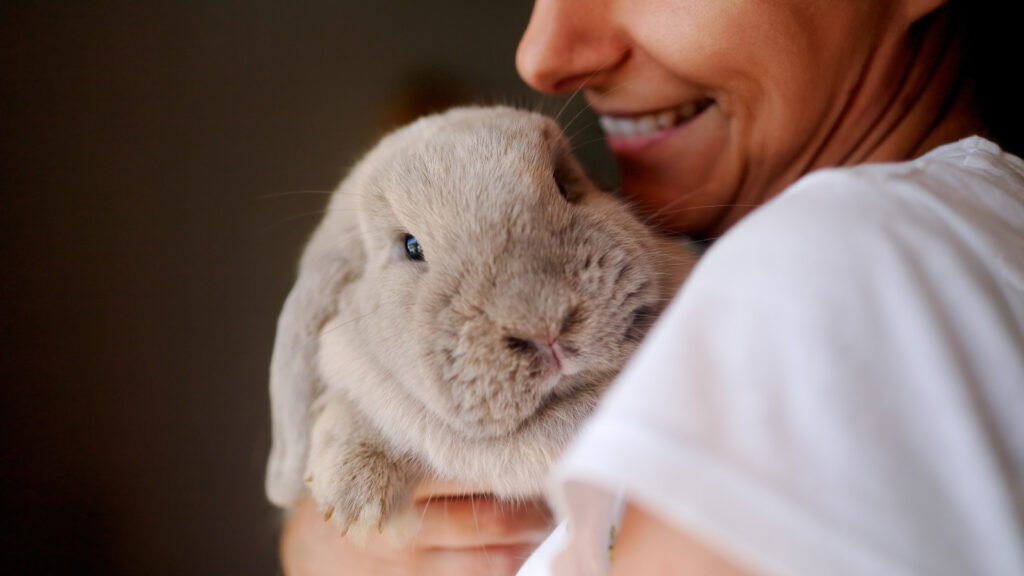Trancing, or “tonic immobility,” is a practice where a rabbit is placed on their back, often in an attempt to calm them or make handling easier. For years, some caregivers and even outdated veterinary guides suggested that this was a safe way to keep a bunny still for grooming, nail trims, or medical checks. However, research has since shown that trancing is not a calming or relaxing experience for rabbits—instead, it is a response to extreme fear.
What Happens When a Rabbit is Tranced?
When a rabbit is flipped onto their back and held in position, they enter a state of tonic immobility. This is an involuntary, instinctive reaction triggered by intense fear. In the wild, rabbits are prey animals, and when a predator grabs them, their bodies may shut down in a last-ditch survival mechanism—essentially “playing dead.”
Studies on rabbit behavior and physiology1,2,3, have found that during tonic immobility:
- The bunny experiences a dramatic increase in heart rate and stress hormones. Their body is flooded with adrenaline and cortisol, the same stress hormones that would surge if they were being chased or caught by a predator.
- The rabbit is not “relaxed” but terrified. Some rabbits may freeze completely, while others may exhibit subtle signs of distress, such as wide eyes, rapid breathing, or trembling.
- There is a risk of serious harm. The stress of trancing can cause some rabbits to panic when they are flipped back over, increasing the risk of injury. In extreme cases, it could even trigger shock, which can be fatal.
Why Do Some Rabbits Seem to Tolerate It?
Some caregivers mistakenly believe that because their rabbit remains still during a trance, they must be comfortable. However, tonic immobility is not a voluntary state—it is a last resort when the rabbit believes escape is impossible. Just because a rabbit is motionless does not mean they are okay; in fact, they may be experiencing intense fear.
Trancing is Outdated and Unnecessary
In the past, some veterinarians or groomers used trancing to make handling easier. However, modern rabbit care has moved away from this practice as we better understand rabbit behavior and stress responses. A rabbit-savvy veterinarian should never need to trance a rabbit for routine exams, and experienced caregivers can use gentle, trust-based handling methods instead.
If you need to groom or examine your rabbit:
- Use positive reinforcement. Reward your rabbit with treats and gentle petting to make handling a positive experience.
- Support them properly. Always hold your rabbit securely, keeping all four feet supported to help them feel safe.
- Work at their pace. If they are struggling, take breaks and try again later rather than forcing them into a stressful situation.
Respect Your Rabbit’s Well-Being
Rabbits are intelligent, social and sensitive animals who rely on us to respect their needs. Trancing is not a harmless trick—it is a fear-based response that should be avoided. By using gentle handling techniques and respecting your rabbit’s comfort, you can build trust and ensure they feel safe in your care.
- Oxley, James & Ellis, Clare. (2015). Misconceptions regarding rabbit behaviour. The Veterinary record. 176. 339-340. 10.1136/vr.h1647. ↩︎
- RAWF (2024).Trancing Studies. ↩︎
- University of Huddersfield (2024). Trancing Rabbits: Relaxed hypnosis or a state of fear?
↩︎

